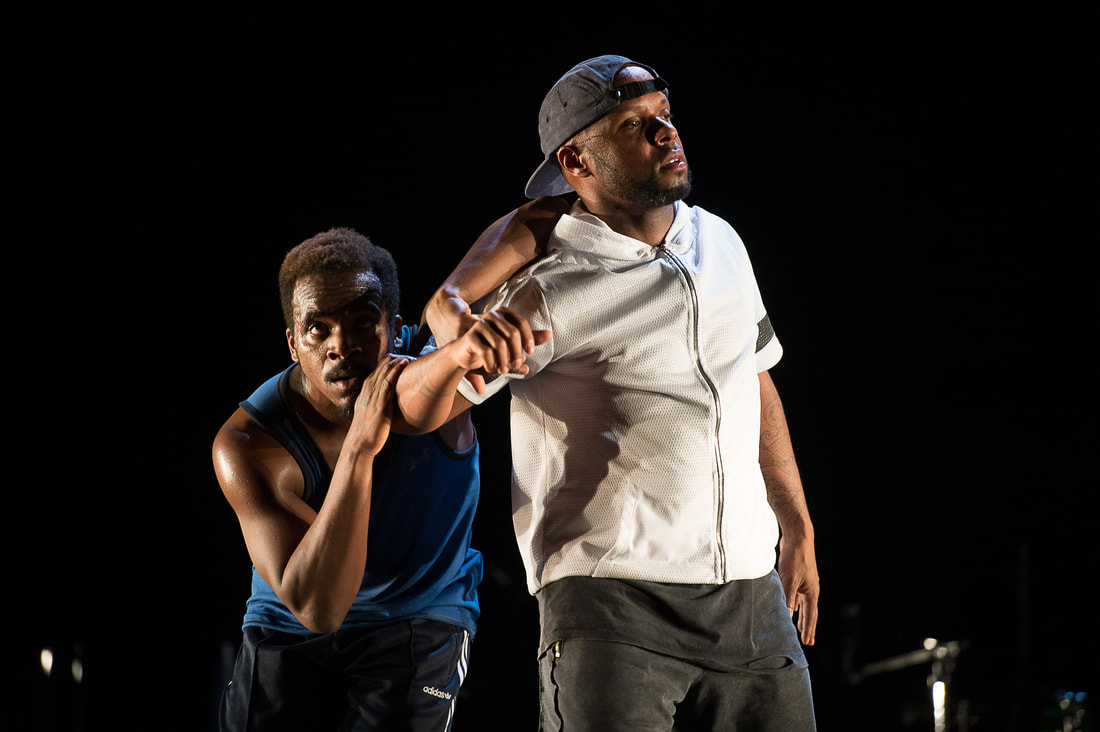|
Camille A. Brown and Dancers performed "ink" at Mass MoCA on Saturday night. Camille A. Brown has completed her trilogy on the black identity with “ink.” And as seen on Saturday night at Mass MoCA, the third and final piece is her best. It’s the most expressive, thoughtful and engaging.
It’s also a relief as that two that proceeded “ink,” “Mr. TOL E. RAncE” (2012) and “BLACK GIRL: Linguistic Play” (2015), were respectively disturbing and disappointing. “Mr. TOL E. RAncE” was offensive as it appeared to mock black entertainers from minstrel to gangsta rap. “BLACK GIRL” was simply dull, a mime of girlhood games that did not lend any sympathy to the characters. Nor was there any real dancing. For “ink,” Camille A. Brown and Dancers did move; and they also depicted the world in which they live and their ability to adapt to circumstances. Brown, in program notes, likened it to being a superhero. The six-sectioned work began with the athletic Brown in “Culture Codes.” With a musical quartet behind her, she appeared to both dress herself and shed her skin. She violently shook her hands as if letting go of something before venturing beyond the box on which she sat. Once beyond, she stomped her feet in a rhythmic ballet and bent over to hike up her buttocks. It was partially a power play, exuding confidence, and a signal that she was still pigeonholed in a part played on the outside world. Among the most memorable segments were “Milkshake” with Catherine Foster who shimmied and shook her whole being as if to discard something repugnant. Like Brown, she demonstrated an indisputable potency. She was vigor, she was dominance that none could defeat. “Turf” with Juel D. Lane and Maleek Washington also captured the imagination with the two who looked to suit up and float away. Their broad view of world awed and enlightened them, but back on earth, they were once again victims of brutality – unable to breath and kicked down into submission by an invisible larger hand. The intimate “Shedding” with Quinlan Arnold and Beatrice Capote was also indelible. As violinist Monique Brooks Roberts circled around them, the two took turns trying to contain upset and anger. The struggle, perhaps, was a reflection of the mandatory suiting up to face the world on a daily basis. Enhancing it all was the music, from Roberts, Kwinton Gray on keyboard, Mike Ramsey and Wilson R. Torres on percussion, which was atmospheric, sharp and responsive to the dancers. The scenic design by David L. Arsenault was also fantastic – two peeling billboards framed the dances and musicians on which fully formed black faces could be seen. The final in the triptych prompts me to rethink “Mr. TOL E. RAncE.” Perhaps Brown wasn’t mocking artists, only noting the horrible lengths black performers go to in order to be accepted and successful in this white world. The question lingers.
0 Comments
Leave a Reply. |
Wendy
|

 RSS Feed
RSS Feed
